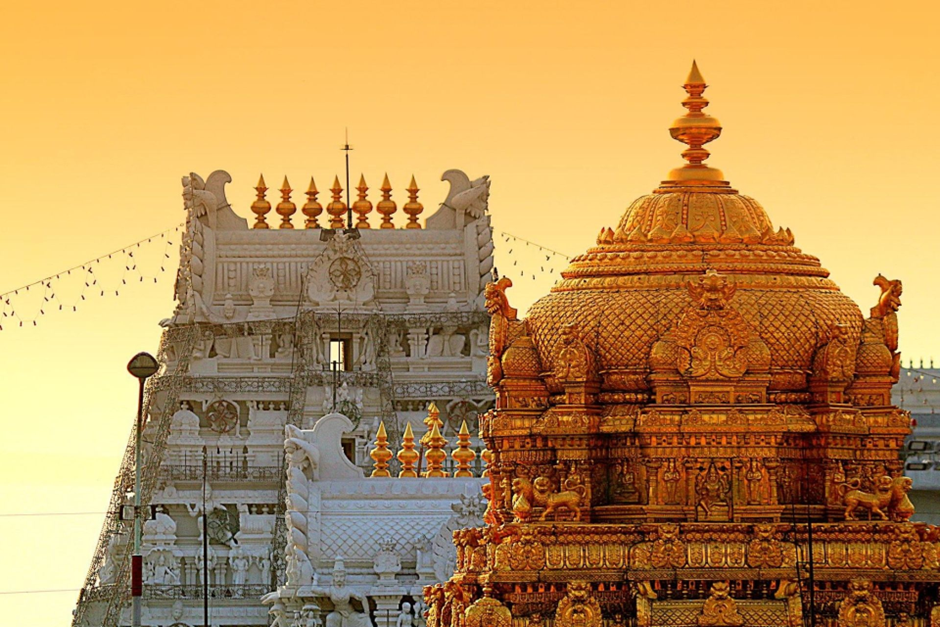- Courses
- GS Full Course 1 Year
- GS Full Course 2 Year
- GS Full Course 3 Year
- GS Full Course Till Selection
- CSAT
- 5 LAYERED ARJUNA Mentorship
- Public Administration Optional
- Online Program
- GS Recorded Course
- NCERT Batch
- Polity Module Course
- Geography Module Course
- Economy Module Course
- AMAC Module Course
- Modern India, Post Independence & World History Module Course
- Environment Module Course
- Governance Module Course
- Science & Tech. Module Course
- International Relations and Internal Security Module Course
- Disaster Management Module Course
- Ethics Module Course
- Essay Module Course
- Current Affairs Module Course
- ABOUT US
- OUR TOPPERS
- TEST SERIES
- FREE STUDY MATERIAL
- VIDEOS
- CONTACT US
How India’s temples are run
How India’s temples are run

In September 2024, Supreme Court heard petitions regarding the alleged adulteration of ghee in Lord Venkateswara’s laddu prasadam, the debate around government control of temples in India has resurfaced.
- Hindu organizations, including the Vishwa Hindu Parishad (VHP), are calling for greater autonomy for temples from state oversight.
- Andhra Pradesh Deputy Chief Minister Pawan Kalyan has called for a “Sanatana Dharma Rakshana Board” to look into all issues relating to temples.
Overview of Temple Management in India
- Religious Diversity: While Muslim and Christian places of worship are typically managed by community-run boards or trusts, the majority of Hindu, Sikh, Jain, and Buddhist temples fall under significant government control.
- Statistics: Hindu temples constitute a substantial portion of the approximately 3 million places of worship in India, according to the 2011 census.
State Control Mechanisms
- Tamil Nadu: Managed by the Hindu Religious and Charitable Endowments (HR&CE) department.
- Andhra Pradesh: The government controls the Tirumala Tirupati Devasthanams (TTD), responsible for the famous Tirupati Temple.
- Use of Funds: Income from donations at large temples often subsidizes smaller temples and supports welfare initiatives like hospitals and schools.
Legal Framework Governing Temple Administration
- Various states have enacted laws allowing government oversight of temples. States like Tamil Nadu, Karnataka, Andhra Pradesh, and Kerala have specific legislation regulating temple management.
- The Jammu and Kashmir Shri Mata Vaishno Devi Shrine Act of 1988 specifically manages the Vaishno Devi Shrine.
- The government’s authority to legislate on these matters stems from Article 25(2) of the Constitution, permitting laws that regulate religious practices in the interest of social welfare and reform.
Historical Context of Government Control
- Ancient Foundations: The history of monumental temples dates back to the Mauryan period (321-185 BCE), with temples serving as economic and cultural hubs.
- Colonial Influence: Between 1810 and 1817, the East India Company enacted laws allowing government interference in temple administration to prevent income misappropriation. The Religious Endowments Act of 1863 formalized this control through committees.
- Post-Independence Developments: The Madras Hindu Religious Endowments Act of 1951 set the template for state management of temples, which was replicated across various states, giving rise to extensive government oversight.
The Demand for Autonomy
The call for freeing temples from government control has a long history:
- 1959: The Rashtriya Swayamsevak Sangh (RSS) first demanded the return of temple management to Hindu devotees.
- 1988: The Akhil Bharatiya Karyakari Mandal urged state governments to cede control over temples.
- 2021: The VHP reiterated its demand for a central law to free temples from government oversight.
- Recent Developments: In recent years, some state governments have initiated steps to relax control over temples, including those in Madhya Pradesh and Karnataka.
Legal Perspectives on Government Control
- Supreme Court Rulings: The courts have been cautious about interfering in matters of religious administration, often upholding the state's right to regulate.
- Shirur Mutt Case (1954): The Supreme Court affirmed that while religious bodies have the right to administer their properties, the state can also impose regulations.
- Ratilal Panachand Gandhi Case (1954): The court recognized the fundamental rights of religious bodies but allowed for state regulation.
- Pannalal Bansilal Pitti Case (1996): The court upheld a law that altered hereditary rights in temple administration, affirming that laws need not apply uniformly to all religions.
- 2022 Petition: A recent petition to free temples from state control was withdrawn after the Supreme Court emphasized that existing regulations serve broader societal needs.
Conclusion
The management of temples in India is a complex interplay of historical precedents, legal frameworks, and current demands for autonomy. As religious organizations push for greater control over their places of worship, the legal and societal implications continue to unfold, highlighting the tension between state oversight and religious freedom. This ongoing debate not only affects Hindu temples but also raises broader questions about the relationship between religion and state in India.
Must Check: Best IAS Coaching In Delhi
UPSC Prelims Result 2024 Out: Expected Cut Off & Other Details, UPSC Prelims 2024 Answer with Explanation, Daily Prelims Quiz, Daily Current Affairs, MONTHLY CURRENT AFFAIRS TOTAL (CAT) MAGAZINE, Best IAS Coaching Institute in Karol Bagh, Best IAS Coaching Institute in Delhi, Daily Mains Question Answer Practice, ENSURE IAS UPSC Toppers, UPSC Toppers Marksheet, Previous Year Interview Questions, UPSC Syllabus




